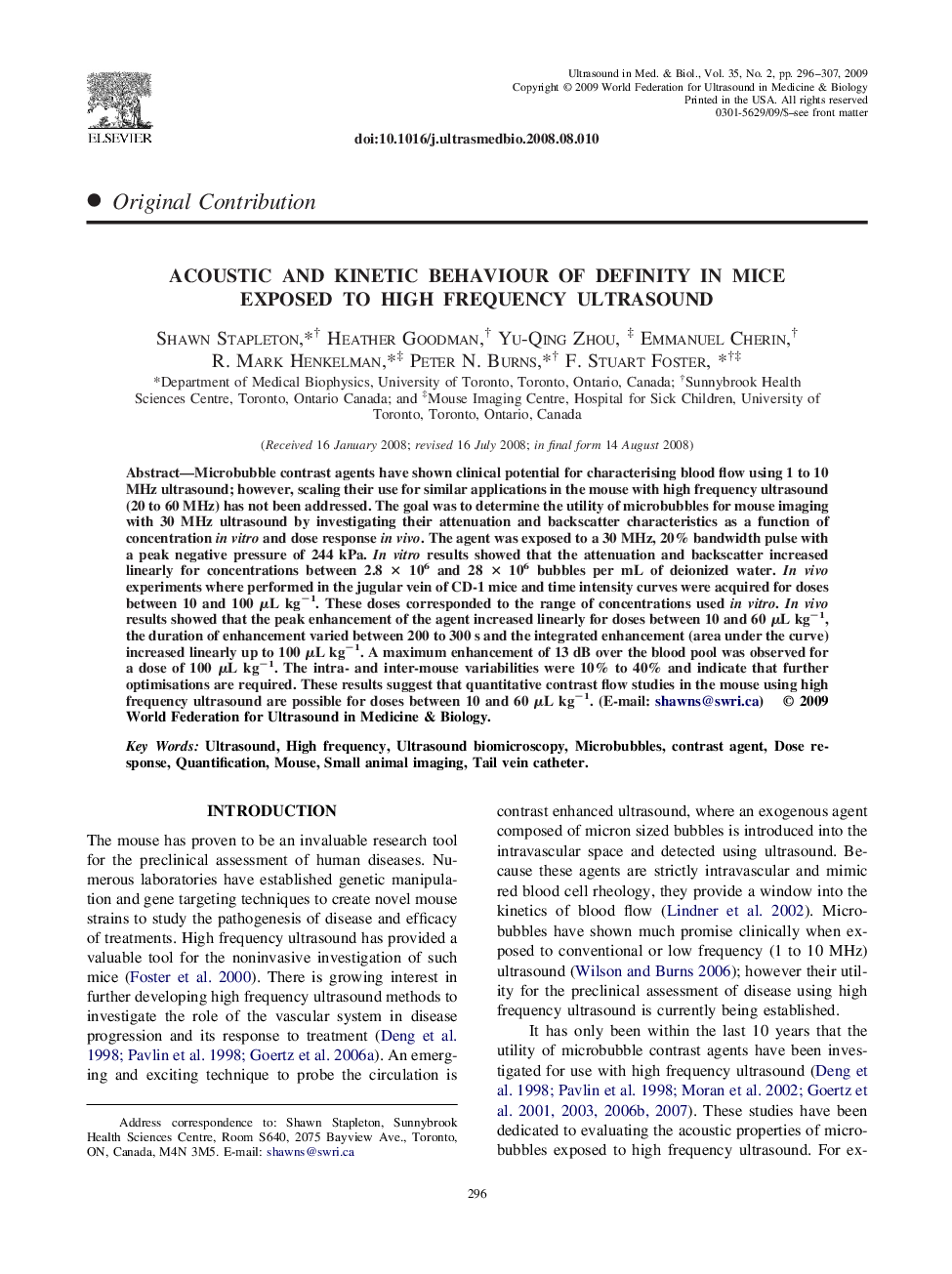| Article ID | Journal | Published Year | Pages | File Type |
|---|---|---|---|---|
| 1761520 | Ultrasound in Medicine & Biology | 2009 | 12 Pages |
Abstract
Microbubble contrast agents have shown clinical potential for characterising blood flow using 1 to 10 MHz ultrasound; however, scaling their use for similar applications in the mouse with high frequency ultrasound (20 to 60 MHz) has not been addressed. The goal was to determine the utility of microbubbles for mouse imaging with 30 MHz ultrasound by investigating their attenuation and backscatter characteristics as a function of concentration in vitro and dose response in vivo. The agent was exposed to a 30 MHz, 20% bandwidth pulse with a peak negative pressure of 244 kPa. In vitro results showed that the attenuation and backscatter increased linearly for concentrations between 2.8 à 106 and 28 à 106 bubbles per mL of deionized water. In vivo experiments where performed in the jugular vein of CD-1 mice and time intensity curves were acquired for doses between 10 and 100 μL kgâ1. These doses corresponded to the range of concentrations used in vitro. In vivo results showed that the peak enhancement of the agent increased linearly for doses between 10 and 60 μL kgâ1, the duration of enhancement varied between 200 to 300 s and the integrated enhancement (area under the curve) increased linearly up to 100 μL kgâ1. A maximum enhancement of 13 dB over the blood pool was observed for a dose of 100 μL kgâ1. The intra- and inter-mouse variabilities were 10% to 40% and indicate that further optimisations are required. These results suggest that quantitative contrast flow studies in the mouse using high frequency ultrasound are possible for doses between 10 and 60 μL kgâ1. (E-mail: shawns@swri.ca)
Keywords
Related Topics
Physical Sciences and Engineering
Physics and Astronomy
Acoustics and Ultrasonics
Authors
Shawn Stapleton, Heather Goodman, Yu-Qing Zhou, Emmanuel Cherin, R. Mark Henkelman, Peter N. Burns, F. Stuart Foster,
